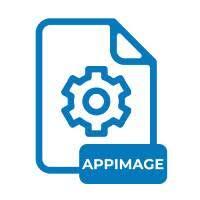.APPIMAGE File Extension

Linux Software Package
| Developer | AppImage |
| Popularity | |
| Category | Executable Files |
| Format | .APPIMAGE |
| Cross Platform | Update Soon |
What is an APPIMAGE file?
The .appimage file extension is used for a specific type of Linux software package known as an AppImage. AppImages are a format for distributing portable software on Linux without needing to install them. They encapsulate an application and all its dependencies into a single executable file, allowing it to run on various Linux distributions.
More Information.
The AppImage format was first introduced in 2004. It was designed to address the challenges of software distribution on Linux, where different distributions use different package management systems (like DEB for Debian-based systems and RPM for Red Hat-based systems). By bundling an application with its dependencies into a single file, AppImage aimed to make software distribution and installation easier and more consistent across various Linux environments.
Origin Of This File.
The AppImage format was introduced by the AppImage project to provide a universal packaging solution for Linux applications. The goal was to simplify the distribution of software across different Linux distributions by avoiding the need for separate packaging formats for each distribution.
File Structure Technical Specification.
An .appimage file is essentially a compressed archive that contains:
- Executable File: The main binary executable of the application.
- Bundled Dependencies: All libraries and dependencies required to run the application.
- AppImage Metadata: Information needed by the AppImage runtime to properly execute the application.
- Filesystem: A minimal Linux filesystem that includes necessary libraries and configuration files.
How to Convert the File?
Windows
- Direct Conversion: There is no direct way to convert an
.appimageto a Windows executable. Windows and Linux have different binary formats and system architectures. - Alternative Approach: Use a virtual machine or container running Linux to execute the
.appimage. Tools like WSL (Windows Subsystem for Linux) or a Linux VM can be used to run Linux applications, including.appimagefiles.
Linux
- Direct Conversion:
.appimagefiles are already designed for Linux. You don’t need to convert them. Just make the file executable and run it.
macOS
- Direct Conversion: There’s no direct way to convert
.appimageto a macOS application (.appformat). - Alternative Approach: Use a Linux virtual machine or container on macOS. You can use tools like Parallels Desktop or VirtualBox to run a Linux environment where you can execute the
.appimage.
Android
- Direct Conversion: Android does not support
.appimagefiles or Linux binaries directly. - Alternative Approach: Running Linux applications on Android requires a Linux environment. Tools like Termux or UserLAnd can be used to create a Linux-like environment on Android, but it’s complex and may not support all
.appimageapplications.
iOS
- Direct Conversion: iOS does not support
.appimagefiles or Linux binaries. - Alternative Approach: There is no direct way to run
.appimagefiles on iOS. iOS apps are distributed in a completely different format and have different runtime requirements.
Others (e.g., Other Operating Systems)
- Direct Conversion: Most other operating systems have different binary formats and system architectures, making direct conversion of
.appimagefiles impractical. - Alternative Approach: For other platforms, the best approach is often to find native applications or alternatives. If a specific Linux application is needed on another platform, you might consider looking for a version or equivalent application that is designed for that platform.
Advantages And Disadvantages.
Advantages:
- Portability: AppImages are self-contained and can run on any Linux distribution that supports the format.
- No Installation Required: Simply making the
.appimagefile executable and running it is all that’s needed—no need for traditional installation processes. - Consistency: Ensures that the application will run with the same dependencies and environment, regardless of the underlying Linux distribution.
Disadvantages:
- Larger File Size: Bundling all dependencies can result in larger file sizes compared to traditional package formats.
- Compatibility: While AppImages aim for broad compatibility, there may be issues with older or highly customized Linux distributions.
- Updates: AppImages do not automatically update; users need to download new versions manually.
How to Open APPIMAGE?
Open In Windows
AppImages are not natively supported on Windows. However, you can use Linux emulation environments or virtual machines to run them. Alternatively, tools like WSL (Windows Subsystem for Linux) might offer some support.
Open In Linux
Natively: AppImage files can be executed directly on Linux. Ensure the file is marked as executable (chmod +x file.appimage), then run it from the terminal or file manager.
Open In MAC
- Natively: AppImage files do not run natively on macOS.
- Workaround: Use a virtual machine or container running Linux to execute AppImage files.
Open In Android
- Natively: AppImage files do not run natively on Android.
- Workaround: Use a Linux emulator or chroot environment to run AppImage files on Android.
Open In IOS
- Natively: AppImage files do not run natively on iOS.
- Workaround: Similar to macOS and Android, you would need a Linux virtual environment to use AppImage files on iOS.
Open in Others
Other Platforms: AppImage files are primarily designed for Linux. On other platforms, the standard approach involves running a Linux environment or virtual machine where you can use AppImage files.













